
The relevant provisions – including Sections 178–180 of the Criminal Code – specify which acts qualify as criminal offenses. These include cultivation, production, acquisition, ordering with the intent of importation, possession, and transportation (import, export, transit), all of which may be punishable.
The purpose of the law is to protect society from the harmful effects of psychoactive substances, while also providing opportunities for more favorable treatment if the offender cooperates or fulfills the conditions established by law.
Narcotics include opium, opium derivatives, cocaine, hashish, hallucinogens, psychotropic substances (such as tranquilizers, sleeping pills, and other medications), etc. However, only substances legally classified as narcotics qualify as such.
The object of the offense may be any substance defined by the interpretive provision of the Criminal Code [Section 459 (1) (1a)], which includes:
substances listed in Schedules 1 or 2 of Annex 1 of Government Decree 78/2022 (XII. 28.) BM,
substances listed in Schedules 1 or 2 of Annex 2 (psychotropic substances),
and substances listed in Annex 3.
For certain related offenses, including “abuse of mind-altering substances,” other psychoactive materials not intended for human consumption but capable of causing intoxication (e.g., solvents, glue, thinner) are also treated as narcotics.
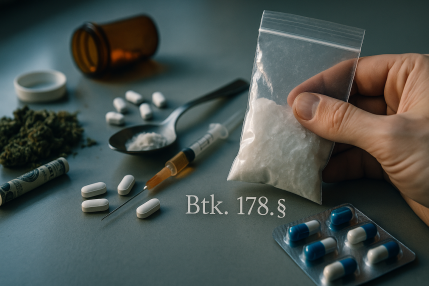
The statutory concept of drug possession covers a broad range of behaviors. Section 178 (1) specifies cultivation, production, acquisition, possession, ordering with the intent of importation, import, export, and transit. It also includes providing material resources for these acts.
Cultivation: occurs once the plant capable of producing narcotics begins to grow independently. If it can be made suitable for consumption without further processing, the crime is complete.
Production: any process resulting directly in consumable narcotics. Preparatory acts (obtaining raw materials or tools) may be separately punishable.
Acquisition: obtaining possession of narcotics, whether gratuitously, for consideration, or unlawfully (e.g., theft).
Possession: ongoing holding enabling consumption or disposal of narcotics.
Transportation (import, export, transit): considered possession only if for personal use; otherwise, it qualifies as trafficking.
Ordering with intent of importation: increasingly common, often through online purchases from foreign websites.
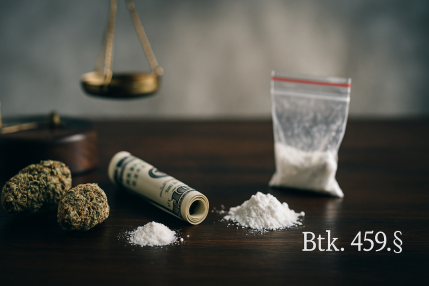
Section 180 (1) provides that an offender cultivating, acquiring, possessing, or consuming a minor quantity of narcotics for personal use may avoid punishment if:
they admit the offense, and
before the first-instance judgment, they provide proof of at least six months’ participation in drug treatment or preventive-educational services, and
before indictment, they disclose the circumstances of the offense or allow identification of the dealer.
This reflects the legislator’s aim to handle low-level, personal-use offenses not necessarily with punishment but with treatment and prevention.
The classification by quantity is decisive:
Minor quantity: thresholds set by the Criminal Code and related decrees, based on active substance content.
Substantial quantity: twenty times the upper limit of the minor quantity.
Especially substantial quantity: two hundred times the minor quantity.
Where a narcotic is not listed, the pure active substance content is used to determine classification. These thresholds directly affect sentencing and are central to defense strategies.
Basic offense: 2 to 8 years’ imprisonment (no aggravating circumstances).
Minor quantity: punishable by up to 2 or 3 years, qualifying as a misdemeanor.
Substantial quantity: 5 to 15 years’ imprisonment.
Especially substantial quantity: 5 to 20 years’ imprisonment.
The statutory definition of drug possession is highly complex, and proper classification depends on multiple factors. Legal consultation is strongly advised.
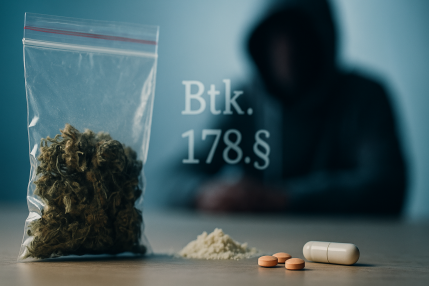
The law provides lighter penalties in certain cases:
Minor quantity possession (Section 178 (5)–(6)) → lower sentencing ranges.
Consumption alone → up to 2 years, or up to 3 years in case of public officials or commercial intent.
This rule is subsidiary: if trafficking is also involved, the punishment for consumption is absorbed by the graver offense.
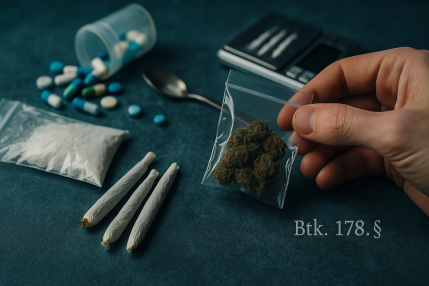
Harsher penalties apply where:
the act is committed commercially,
committed in conspiracy (organized group),
committed by a public official or person performing a public duty.
By quantity:
Substantial
Especially substantial
If an adult (over 18) involves minors (under 18), or if the act is committed in or near educational or childcare institutions (Section 179), stricter penalties apply.
Such cases may result in 5 to 20 years’ imprisonment.
For especially large-scale cases, punishment may extend up to life imprisonment.
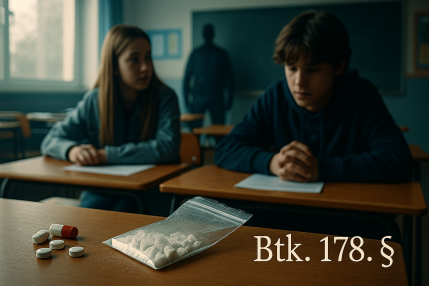
Section 180 (3) provides for unlimited mitigation if the offender – not eligible for treatment diversion – enables authorities to identify the dealer before indictment.
This possibility cannot always be applied, but it incentivizes cooperation in dismantling drug distribution networks. Legal advice is essential before considering this.

Drug possession encompasses behaviors ranging from personal use to organized crime. Hence, legislation details quantity, purpose, and circumstances. Courts assess whether the act was truly for personal use and whether the offender cooperated.
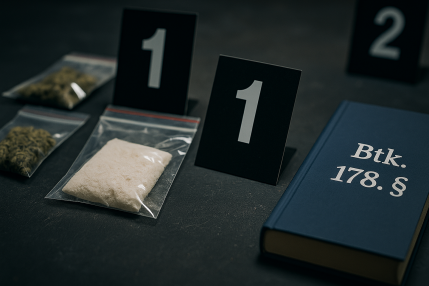
Do not make immediate statements – exercise the right to remain silent.
Anything you say may be used against you.
Request a lawyer – never speak without one.
A lawyer helps determine what, when, and how to say. Never sign documents unread.
Understand the quantity thresholds.
Minor → possible diversion.
Substantial/especially substantial → serious crime with long imprisonment.
Diversion for first-time offenders.
Participation in a 6-month treatment or prevention program may terminate proceedings.
Request copies of all case files.
You are entitled to copies of all documents – use this right.
Do not destroy or hide substances.
Do not bribe or threaten officials.
Do not lie – remain silent until consulting a lawyer.
The penalty depends on quantity, circumstances, prior criminal record, and cooperation. While criminal law sets strict limits, courts weigh individual circumstances heavily.
This article is for informational purposes only and does not constitute personalized legal advice.
